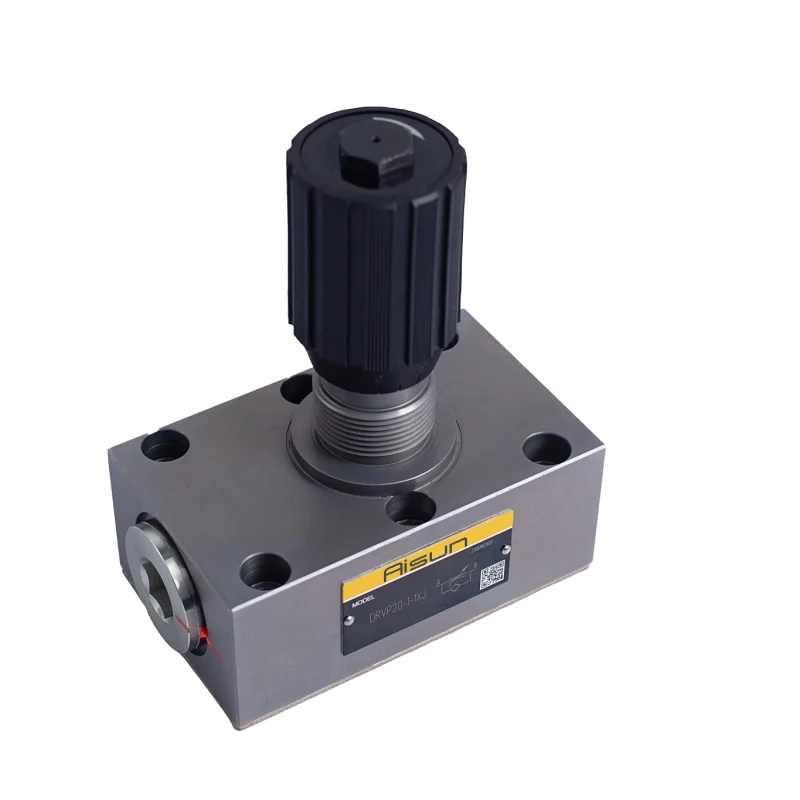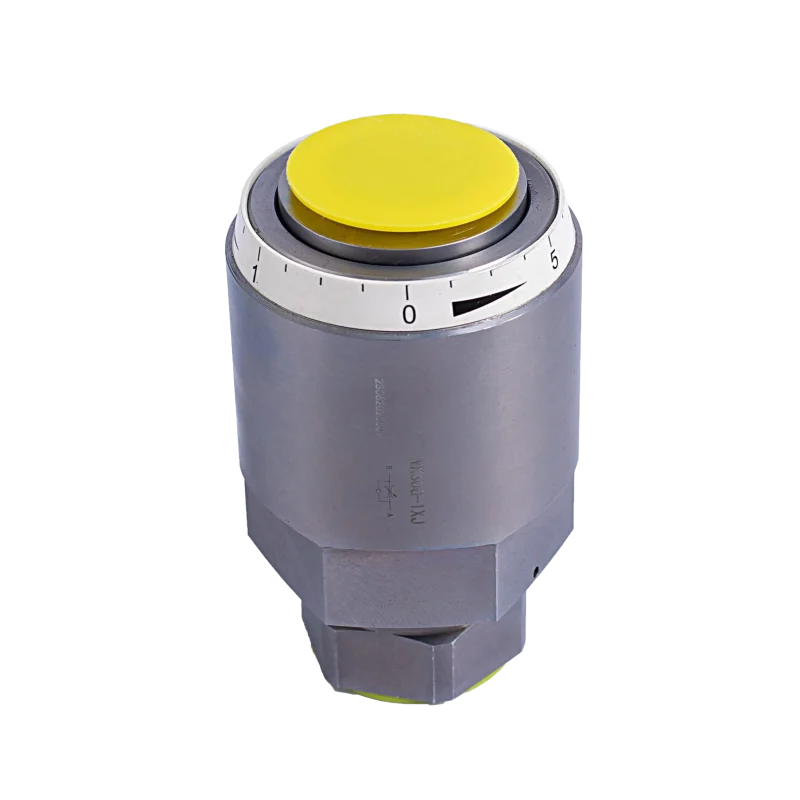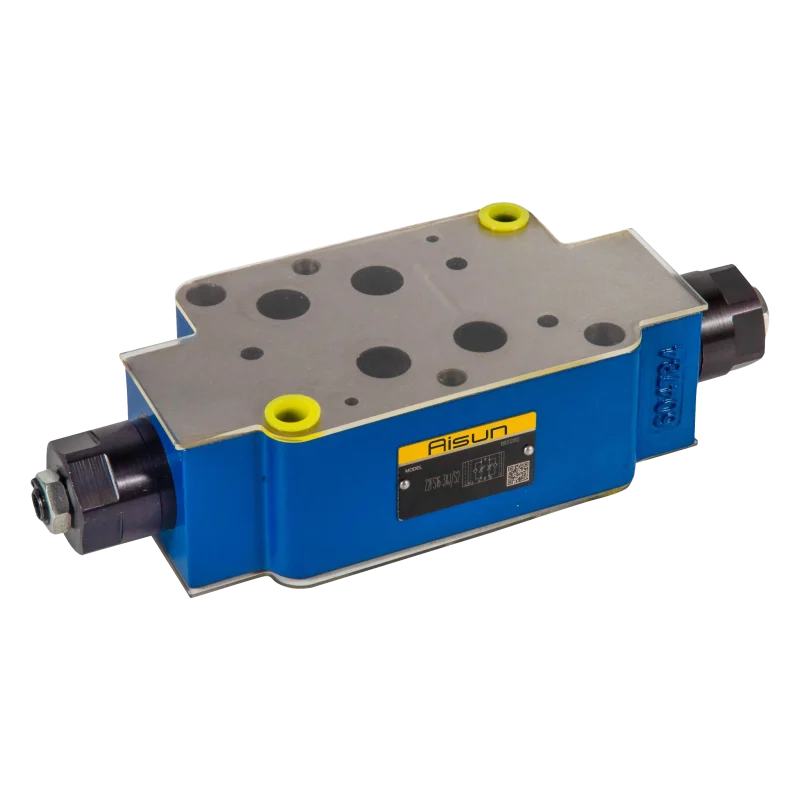Hydraulic flow control valves are used to regulate the flow rate of hydraulic fluid in a hydraulic system. These valves are designed to control the speed of hydraulic actuators, cylinders, or motors by adjusting the amount of fluid that is allowed to pass through the valve.
There are several types of hydraulic flow control valves, including:
1. Throttle valves: Throttle valves are used to restrict the flow of fluid by creating a narrow passage for the fluid to flow through. By adjusting the size of the passage, the flow rate can be controlled, allowing for precise control of the speed of hydraulic actuators.
2. Needle valves: Needle valves are similar to throttle valves but have a needle-shaped plunger that can be adjusted to control the flow rate more precisely. The needle can be turned to open or close the valve, regulating the flow of fluid as needed.
3. Flow divider valves: Flow divider valves are used to split the flow of hydraulic fluid into two or more separate paths, each with its own flow rate. This allows for different actuators or components to receive different flow rates, providing precise control over the system.
Hydraulic flow control valves are typically used in applications where precise control of speed or motion is required, such as in hydraulic presses, machine tools, and industrial machinery. These valves are essential for ensuring the smooth and efficient operation of hydraulic systems and can help prevent damage to equipment by controlling the flow of fluid to different components.
-
Flow Control Valve 2FRM
Price range: $103 through $248Flow Control Valve 2FRM
Hydraulic Valve Flow Control Valve Model: 2FRM
- Size 10 to 16
- Maximum working pressure 315 bar
- Maximum working flflow 160 L/ min
- Optional pressure compensator
- stroke limiter
- Start-up jump reduction
- Lockable knob
- Flow control in both direction by means of current stacking plate
-
Flow control valve DV
Price range: $150 through $310Flow control valve DV
The DV(P)/DRV(P) type flow valves, also known as (Check) Restrictor Valves, are essential flow control valves in hydraulic systems. These valves are specifically designed to regulate the speed of actuators with precision and simplicity. Additionally, they can function as shut-off valves when fully closed, adding to their versatility in hydraulic applications.
The design of the DV(P)/DRV(P) Flow back valves includes a triangular scale that visually represents the flow adjustment. The size of the triangle on the valve scale corresponds to the flow rate, providing a quick and intuitive way to assess the fluid flow magnitude. This visual cue is crucial for operators and system engineers to accurately gauge and control hydraulic flow. -
Flow Control Valve MG & MK
Price range: $98 through $123In the field of hydraulic engineering, precise control over fluid flow is paramount for ensuring optimal performance. The MG and MK valves, as restrictive valves, play a crucial role in achieving this control. With a strong emphasis on oil pressure and viscosity, these valves provide a reliable solution for controlling fluid flow in hydraulic systems. This article will delve into the design intricacies, operational mechanisms, and various applications of the MG and MK valves, highlighting their significance in hydraulic engineering.
Restrictive Valve
The MG model is specifically designed as a restrictive valve capable of throttling fluid flow in both directions. Its design features a side hole (3) through which hydraulic oil passes, reaching the throttling orifice (4). This critical component is formed by the valve body (2) and the adjusting sleeve (1).
Similar to the MG valve, the MK valve is another exemplary restrictive valve utilized in hydraulic systems. It shares a common focus on oil pressure and viscosity, ensuring accurate control over fluid flow. -
Modular check valve Z2FS
Price range: $59 through $348Modular check valve Z2FS
At its core, the Z2FS check valve operates as a double throttle check valve, boasting a stacked design that sets it apart from conventional counterparts. This design incorporates two throttle check valves symmetrically arranged to govern fluid flow meticulously. The primary objective of this valve is to limit the main flow or control the flow within one or two working oil ports, providing engineers with a versatile tool for managing hydraulic systems with precision.
In scenarios where meter-in control is imperative, the oil fluid follows a specific path from port A1 to A2 through the intricately designed throttle port(1). This port comprises the valve seat (2) and throttle spool (3), components that play a pivotal role in regulating the flow. The adjustability of the throttle spool (3) along its axis, facilitated by the adjusting screw (4), empowers operators to fine-tune throttle port(1) to achieve the desired flow characteristics. Upon the fluid’s return from the working oil port A2, the valve seat (2) opens against the force exerted by the spring (5). This ingenious mechanism transforms the valve into a check valve, allowing for unrestricted free-flow in the opposite direction. The flexibility to configure the valve for meter-in or meter-out control, depending on its installation position, further amplifies its utility in diverse hydraulic applications.




